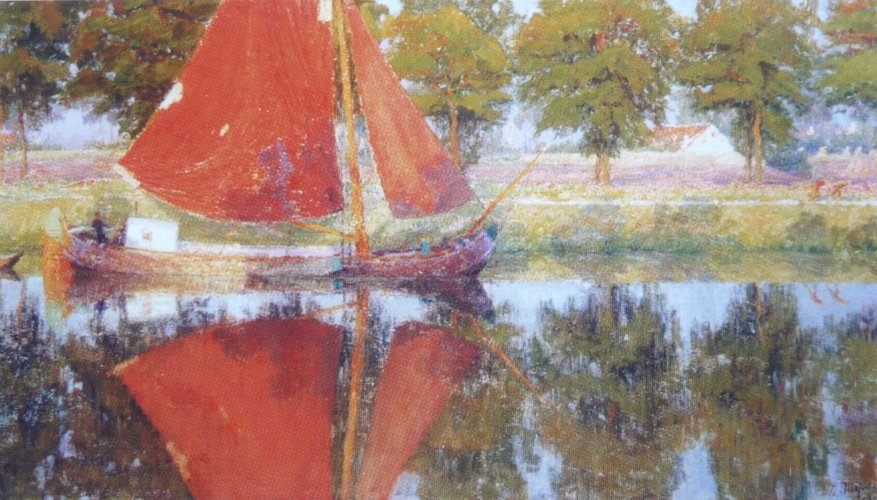Georges Buysse (1864-1916) was a Belgian painter who studied under the director of the Ghent Academy, Louis Tijtgadt. He was also greatly influenced by Emil Claus, with whom he founded the “Vie et Lumiére” (“Life and Light”) group in 1904. The acceptance of the impressionism principles advocated by this group resulted in a significant brightening of his works, “framing by chance” and studying the phenomena of light at different times of day and year. Edward Alexander Raczynski purchased two paintings by this artist for his collection. These are landscapes that exude peace and invite contemplation of nature.
Description of the painting:
The work “Red Sail” is a peaceful landscape created in the Belgian Impressionism vein, of which Buysse, alongside Emil Claus, was the most prominent representative. The pleasant-looking painting captures a fleeting moment. Buysse specialized in depicting landscapes at different times of day, “Red Sail” is one of the presentations of this view.
The composition of “Red Sail” is based on color spots, which are spread along the horizontal axis, forming their own mirror reflection. The dominant color is the titular red sail. The sailing boat is not placed on the central vertical axis, but fills the left part of the canvas. This technique emphasizes the “randomness” of the moment captured, but also creates an impression of the boat’s movement with the gentle current of the river. The right side remains as a neutral landscape. The bottom part of the painting is filled with a mirror of the Lys River, in which the motif of the red sail is repeated.


